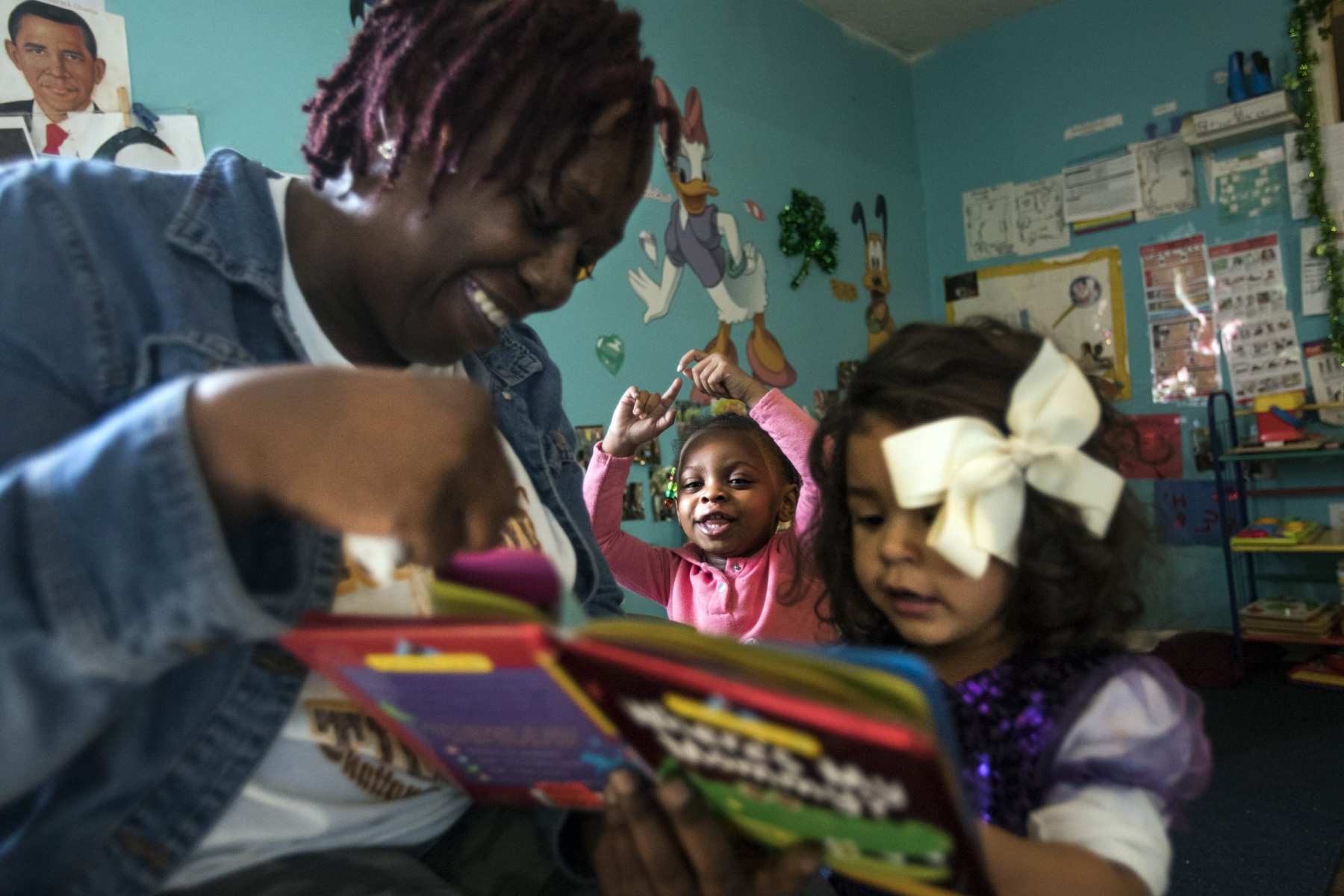This story was co-published with The Washington Post.
When Cathy Belair was searching for child care a couple of years ago for her two young granddaughters in Fletcher, N.C., the middle school math teacher said she found only two “quality” options that had space for the girls and also opened early enough for her to drop them off before work.
So Belair, 56, and her husband, a 60-year-old school custodian, “dipped considerably” into their retirement savings to cobble together more than $1,500 a month for child care. After months on a waiting list, they secured spots for the girls in a different program that was covered first by a scholarship, then financed in part by government child-care vouchers.
Belair lives in a “child-care desert,” or an area where demand for space in licensed child-care programs far outpaces local capacity, according to an analysis released Monday of child-care supply and demand by researchers at the University of Minnesota and the liberal-leaning Center for American Progress (CAP).
The first-of-its-kind nationwide portrait shows that, on average, middle-income areas — considered areas where typical households have a combined annual income of about $75,000 to $85,000 — are most likely to be in child-care deserts, along with areas with heavily Latino populations.
Rural families nationwide had the fewest child-care slots relative to demand across all categories, the researchers found.
“The number one takeaway for me was that areas with enough child care tend to be your higher-income, highly educated communities, whether it’s in urban metros or suburban enclaves,” said CAP’s Rasheed Malik, a senior analyst for early childhood policy who worked with the Minnesota researchers.
The analysis comes as the coronavirus pandemic has upended an already tenuous child-care landscape. Industry groups predict that one-third to half of child-care programs may close permanently without significant public investment, and many economists warn as much as $50 billion may be needed to assist the industry as parents attempt to return to work.
The program Belair’s granddaughters attend — Bell’s School for People Under Six — has said, for example, that it is struggling to stay afloat, with most of its workers furloughed and its director working without pay.
To identify child-care deserts, the researchers compared the number of families with children under 5 in a single census block — the smallest geographic unit used by the U.S. Census Bureau — to state-licensed child-care programs within a 20-minute drive.
They further layered local poverty rates, education levels, median family incomes and home values, along with Black and Latino shares of the population, to provide granular insight into the child-care crisis that American families faced heading into the coronavirus pandemic.
The researchers found that high-income families were nearly four times as likely as low-income families to send infants and toddlers to a licensed child-care program and more than twice as likely to send preschool-age children to a licensed school.
Latino communities were more likely to be child-care deserts than White communities. Detroit, which is nearly 80 percent Black, is a “vast child-care desert,” while the surrounding affluent, White suburbs have “abundant licensed child care,” the researchers found. In Milwaukee, the northern section of the city, which is heavily Black, has more available child care than the southern part, which is heavily Latino.
The researchers say they hope the new window into child-care access can be used to pursue dozens of lines of inquiry about the causes and effects of child-care deserts and inform policymakers.
Lower-income neighborhoods had slightly more child-care capacity than middle-income neighborhoods, for example, which could be due to federally subsidized child-care programs and tuition vouchers, Malik said.
With more than half of the country’s child-care programs shuttered during the pandemic and nearly a third saying they could not weather a closure of more than two weeks, the availability of child care is attracting bipartisan attention as the country begins to reopen.
Democrats and Republicans in Congress have proposed legislation to create multibillion-dollar industry stabilization funds within the already existing Child Care and Development Block Grant, a Department of Health and Human Services program that provides states and tribes with money to help lower-income working families access child care.
Presumptive Democratic presidential nominee Joe Biden is expected to release his own child-care proposal in the coming days as part of a broader vision for the “caregiving” workforce that includes long-term care and paid family leave, according to people familiar with his campaign’s plan.
One hundred economists and academic researchers — including some advising Biden’s campaign — warned in a joint letter Monday that the coronavirus pandemic has only deepened structural problems in child care and called for a $50 billion federal investment in the industry, writing, “We are at a pivotal moment in which policymakers can make lasting, necessary changes to the child care system to reduce long-standing economic inequities.”
Sasha Shunk, who runs a licensed child-care facility from her home in Portland, Maine, where data show the need for licensed child care in parts of the city far exceeds availability, said her program has a years-long waiting list. In her 17 years in the industry, child-care availability has “absolutely gotten worse,” she said, given the low wages and lack of benefits for workers.
Shunk and her three employees relied on unemployment benefits after closing during the pandemic. She is cautiously reopening with fewer children and employees. Shunk has applied for an Economic Injury Disaster Loan advance but has yet to receive any money. Even with her experience and her program’s popularity, Shunk said, it is “really a very challenging” environment for child-care providers.
“The moment my staff goes off unemployment, I’ll have to figure it out,” Shunk said. “I need to have that cushion to fall back on if I don’t have enough children to fill up to capacity, or if there’s a second wave.”







